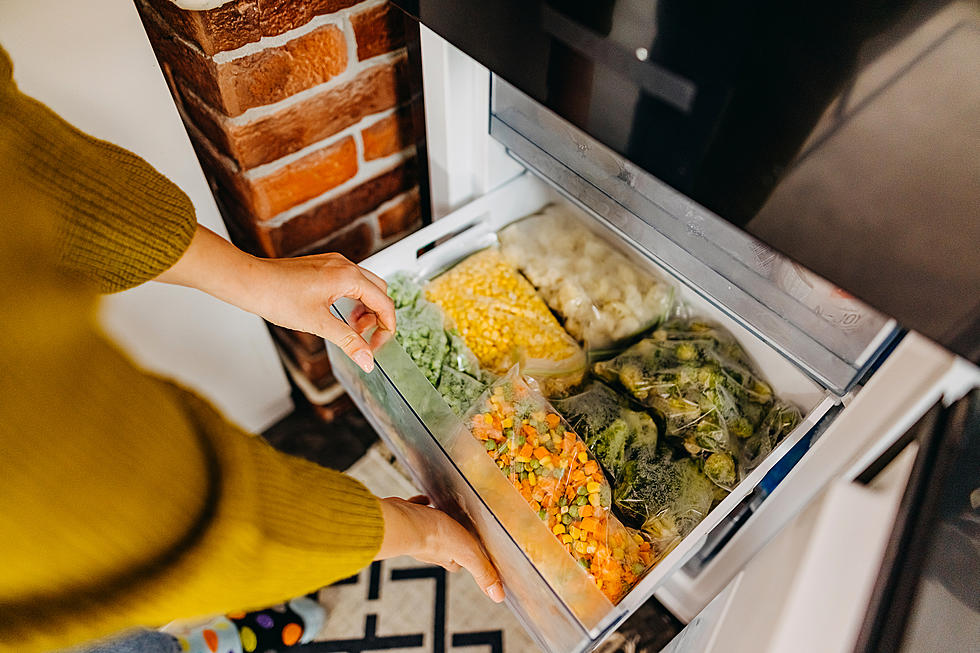
7 Genius Ways to Reduce Food Waste at Home
If you're trying to live a more sustainable life and lower your overall carbon footprint, one way to do it is to reduce your food waste. Lowering your impact through food choices is easier than you think, suggests Ashlee Piper, sustainability expert and author of Give A Sh*t: Do Good. Live Better. Save the Planet. Little steps can help, and also be healthier for you too – such as walking to the store to get groceries instead of driving, if that's an option – since this not only saves on carbon emissions but makes you less likely to buy more than you need.
“'Waste' is a relatively modern concept," Piper explains. "So many traditional recipes use ingredients we now consider cast-offs because [until recently] waste was not a concept in the fabric of society. So, exploring some low- or zero-waste recipes that utilize scraps – and changing what you see as 'waste' is a really helpful North Star in this journey,” she adds.
7 easy ways to reduce food waste at home
Despite how simple it seems to reduce food waste, the issue remains a huge problem in our country. According to the USDA, food waste is believed to account for 30 to 40 percent of the overall food supply. As nonprofit organization Feeding America reports, that amounts to 108 billion pounds of food wasted each year in the United States, or roughly $408 billion in discarded food that never even makes it to our plates — or our stomachs — every year. That ends up in landfills and oceans and contributes to the overproduction of food in the system.
One way to reduce waste is by going plant-based since avoiding animal products helps reduce food waste in the food supply. Current methods of farming and animal agriculture account for an estimated 57 percent of the greenhouse gases that are linked to food production and contribute to climate change. Part of this detrimental impact on the environment can be attributed to waste in the food system at every stage. Beyond that, read on for more great tips to slash food waste without even trying.
1. Create an “eat this first” section in your fridge
In culinary school, it’s called “FIFO,” or First In, First Out, referring to using up ingredients that first made it to the refrigerator that needs to be used up before you reach for others. The same applies to home fridges. “The best way to cut down on food waste is to create an ‘eat this first’ section in your fridge. Keep leftovers and any other food that is about to go bad in a high-traffic area of your fridge,” says Megan McSherry, sustainability educator and creator of acteevism.com. “If you get into the habit of looking at this area first before looking at any other items in the fridge, it's harder to forget about food until it's too late.”
Most refrigerators have two product drawers, Kate Flynn, founder and CEO of a sustainable health food company, Sun & Swell points out. “Use one of them for produce that's going bad soon that you need to eat in the next few days and the other for produce that has more time.”
2. Learn how to compost
When organic materials like food waste go to the landfill, not only do they require significant resources to get there, but they also do not biodegrade as they should (landfills are notoriously devoid of light, oxygen, and microorganisms needed for biodegrading) and release more methane into the atmosphere, Piper explains. “Starting to compost will not only help divert food waste from landfills but helps you to understand the scale of your at-home food waste,” she adds.
“So long as you have a little outdoor space, composting is a great way to turn your food scraps back into soil that replenishes mother earth to ensure they don't end up in landfills,” Flynn adds, Get started with composting basics from the United States Environmental Protection Agency. You can also reduce food waste by growing fruits and vegetables from kitchen scraps.
3. Use your freezer smartly
“Freeze produce that is past its prime for smoothies or juices, suggests McSherry. "Store soups in containers or veggie ‘meatballs' in ice cube trays to be thawed and cooked at a later date. Freeze mushy bananas to turn into ‘nice’ cream."
Have extra fresh herbs on hand that you can’t use before they wilt? Nisha Vora, vegan recipe developer behind Rainbow Plant Life and author of The Vegan Instant Pot Cookbook, recommends freezing them in olive oil. “All you need to do is chop up the herbs, portion them out into an ice-cube tray, then add olive oil and freeze,” she says. “They'll last for months in your fridge, and you can pop them right into a frying pan as the base of a flavorful sauce."
4. Consider buying or making upcycled foods
Upcycled foods simply refer to foods or packaged products made from ingredients that otherwise would not have been eaten. For instance, broccoli stems (add a little salt and chop up for a quick snack; nothing better), using pulp from juiced produce in baked goods, and making carrot top pesto, are all upcycled food ideas.
Vora suggests this easy recipe: “[Boil carrot tops] for two-and-a-half minutes, then plunge them into an ice bath. Once they're dry, add them to a food processor with olive oil, pistachios, garlic, lemon juice, and nutritional yeast for a delicious vegan pesto,” she says, noting you can also do the same thing with the greens from beets or radishes.
You can also buy packaged goods from brands that use upcycled ingredients. “To help reduce food waste, consumers can educate themselves on sustainable food options and support businesses that are helping to create a better future for the planet. There are so many great food companies that are dedicated to creating eco-friendly products,” says Caroline Cotto, co-founder of Renewal Mill, an upcycled plant-based baking company. For instance, Renewal Milk's Dark Chocolate Brownie Mix is made with upcycled organic okara flour, which they make from upcycling the soybean pulp generated during the production of soy milk. “By upcycling the soybean pulp that would otherwise go to waste and release greenhouse gases which cause global warming,” she adds.
5. Make a plant-based grazing board for a meal
“Make a grazing board for a meal. Charcuterie boards are so pretty to make and so much fun to eat," suggests Jen Panaro, founder, and editor of Honestly Modern, an online space dedicated to eco-friendly family living for families. "Grazing boards are a perfect way to turn all the odds and ends and leftovers in your fridge and cabinet into a wholesome meal,” she says. You can check out our tips to make a perfect plant-based charcuterie board.
6. Track how much food you waste in a week
This strategy can change your perspective and your day-to-day food practices. “Knowing how much food you waste may help you be more proactive about reducing your food waste. Try doing a food waste audit and tracking all the food you throw away or compost for a week,” says Panaro. “This experiment can be quite eye-opening and also help you better understand what types of food you most often waste.”
This experiment will teach you the importance of meal planning to reduce food waste. So take extra pains to work on creating meal plans for your week and make a grocery list that sticks to that outline. Adds Panaro: "A bit of planning goes a long way toward reducing the food that we purchase with great intentions, but gets left in the back of the fridge to rot or spoil and eventually end up in our trash."
7. Buy food that’s headed for the dumpster
This is a win for businesses, which can get rid of products that are otherwise headed for the trash, and consumers, who can save money on gently bruised fruit and vegetables. The movement of imperfect food sourcing is continuing to grow and you can now try apps like Flashfood that lets users score big savings on fresh foods that are nearing their best, as well as Too Good To Go, an app that allows to receive unsold food from restaurants and supermarkets near you.
Companies like Misfits Markets “rescue foods in real-time” from being thrown away at grocers and Imperfect Food, which sells food that’s gotten rejected from grocery stores for reasons like cosmetic imperfections or because they have a surplus already and sells these items directly to consumers.
Bottom Line: It's possible to cut down on food waste with 7 easy tips
Food waste accounts for up to 40 percent of all the food produced in this country. To lower your carbon footprint, practice these easy sustainable lifestyle choices.
More From The Beet









